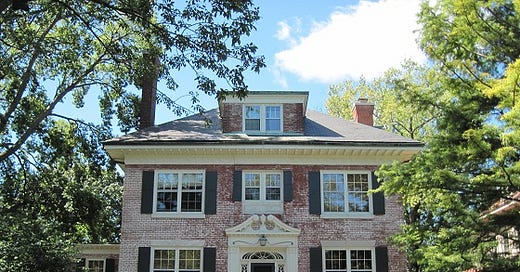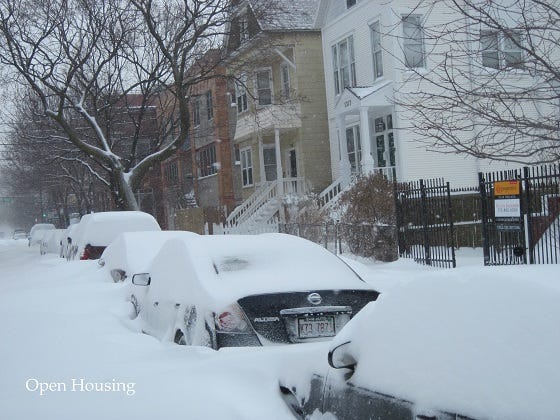In Housing, It's all About the Inventory
The more of it you've got, the likelihood of bigger price declines
I was talking with a friend over the weekend about another, mutual friend, who had been house hunting recently in the Chicago suburb of Evanston.
Some of you may be familiar with Evanston because it’s the home of Northwestern University. In 2021, it had a population of 77,517, so it’s not a small suburb.
Located along the north shore of Chicago, it has a mix of grand old mansions, old 1800s farmhouses, smaller 1920s bungalows, vintage courtyard condo buildings and even glass highrises in its nice central business district which has dozens of restaurants and shops and even a handful of hotels. I recommend a visit.
The mutual friend has been looking at single family homes in the price range of $700,000 to $800,000 since late summer. They are move-up buyers. When I asked why it was taking them so long to find something, the friend told me they had been outbid numerous times.
“There simply isn’t that much on the market,” he said.
Huh?
My mind swirled at his comment. I shook my head in disbelief. How could that be? I’ve been told that the housing market is frozen. That sales have ground to a halt and that inventory is building. Even more ominous, people on Twitter tell me that the housing market is likely to crash at any moment.
I took a look at the Evanston stats. There are just 10 properties currently on the market between $700,000 and $800,000, and only 6 of them are single family homes, which is what the mutual friend wants.
Inventory is Up, But Not Enough
Now, the mutual friend is not a first time homebuyer. She has equity from her previous home that she’s rolling into this one. The 7% mortgage rates haven’t priced her out in Evanston, thanks to the equity.
But it’s another reminder that the media “stories” about the housing market are mostly focusing on the red-hot markets of the last two years like those in Texas and Florida, along with Boise, Atlanta and Charlotte, with Utah and Phoenix thrown in for good measure. They don’t write about boring Evanston, where there was no mini-bubble last year.
Yes, there was a LOT of red-hot markets during the pandemic. But if you actually look at the inventory in those markets, while it has jumped up over the last 6 months from near record lows, most markets aren’t even back to pre-pandemic levels in inventory yet.
The inventory will determine if there are price declines where you are looking. Nothing else.
In Evanston, just 61 single family homes have sold in the $700,000 to $800,000 price range in the last year. There were just 471 single family homes, total, sold during that time.
Evanston is a popular college town that has even been listed in “best cities to retire in” articles thanks to all the cultural and entertainment options the University brings to the city.
And inventory remains tight.
November and December Doldrums
Anyone that has lived in Chicagoland knows that November and December are notoriously slow months in real estate. The weather turns cold and the holidays approach. Neither buyers, nor sellers, are all that interested in listing during that time.
That’s why the mutual friend has decided to wait until the spring buying season. It usually begins after the Super Bowl, even in Chicago when February is the worst month for cold and snow. Believe it or not, Chicagoland buyers have been known to go house hunting even during polar vortexes (or blizzards, see the picture above).
But the mutual friend still keeps her housing tracker active. She is not putting the house search on complete freeze. With so few properties available, she can’t afford to. By the way, she hasn’t listed her current house yet because she believes it will sell quickly because of, what else, lack of inventory.
The 7% mortgage rates have definitely hit the housing market hard. But inventory isn’t rising at the same rate in every city. And there are still plenty of buyers out there.
First Time Home Buyers Hit the Hardest
The 7% rates are hitting all buyers, but especially the first time buyers. They don’t have any equity to roll over. All they have is their down payment.
Inventory remains incredibly low at any “affordable” price points as well.
Want a single family home in Evanston for under $400,000? Good luck.
There are just 14 on the market right now. In a city with a population of 77,517.
The sellers still have the edge in some cities but for how long? Will inventory rise to levels that will bring prices down 10% or more, even in the non mini-bubble cities? And how long will it take?
This spring is certainly going to be one to remember in housing. Buckle up.
Tracey




